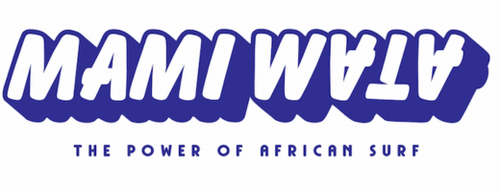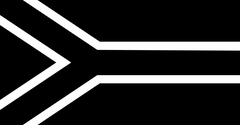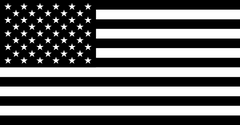Stick it to the Man - Africa’s Surfboard Revolution
Words by Andy Davis
A surfboard is a marvellous thing. A sleek fibreglass intervention that elevates the act of swimming in the ocean (in and of itself a brilliant way to spend your time) to something greater, dare we say, transcendental.
It is no surprise that such a compelling and uplifting activity is growing in popularity, not just in Africa, but all around the world. A trend that has accelerated as a result of COVID lockdowns inspiring a boom in all outdoor activities. Globally the surf equipment market is estimated to be worth USD 3.5 billion, with boards making up 2.7 billion of that. A new board costs between USD 500-800 and that can go up to as much as USD 1500 once you’ve paid for the fins, leash and deckpad. Even if these boards were readily available in surf towns around the African continent, that’s a price point that is simply out of reach for many African surfers. So despite a booming interest in surf, the lack of access to surfboards means that people who would otherwise be enjoying the waves and reaping the many documented benefits of the surfing lifestyle, are not.
As usual, wrapped up in the African surfboard crisis are several golden opportunities.


Courtesy Extra Foam
SHAPING CULTURE
Surfboards are no ordinary business. Unlike other nature-based ‘sporting’ pursuits, like fishing, golf or skiing, the main piece of equipment required to surf is often custom made by a local wizard operating out of a garage somewhere in your neighbourhood. This is a unique situation in the sporting world. You don’t get custom made golf clubs, skis or tennis rackets.
The proliferation of artisanal surfboard shapers sprouted organically during the first sweep of surfing’s popularity in the 1950s. It was a result of huge demand for surfboards, a can-do DIY attitude and easily accessible materials such as polyurethane foam blanks, fibreglass and polyester resin (all available in boat building and spin-offs of a booming petrochemical industry). If you couldn’t afford a board, or get one made quick enough, you simply made your own.
Today, there are big global surfboard brands pushing huge volumes of surfboards, (especially soft tops), as more and more people want to become surfers and demand off-the-shelf boards. But in almost a hundred years of modern surfing, these brands have still not managed to supplant your friendly neighbourhood shaper. You may start on a spongy longboard from China, but as you progress down the surfing path, the allure of a custom built sled becomes almost irresistible.
Artisanal surfboard shaping is a cornerstone of modern surf culture and while it is evolving organically in African surf communities (and this should be supported and accelerated), it’s just not happening fast enough to supply the urgent demand for boards.

BOARDS IN AFRICA
South Africa boasts Africa’s most established surf manufacturing industry, with many local shapers supplying boards to local and export markets. Alas only a few end up in other African countries. Morocco is next in line with numerous shapers like Kai, Tarik and Fahd, supplying the local demand. There’s the West Factory in Abidjan, Cote d’Ivoire who have a CNC machine and turn out a range of high quality surfboards, distributed in the region, as do MCXN boards in Senegal. Beyond that there are the small ding repair and micro-shaping operations you’ll find at most popular surf locations.
But considering the accessibility of the resource (waves) and the booming popularity of the activity (surfing), surfboard manufacturing in Africa, and along with it, the other important elements and ideas that enable and strengthen sustainable surf culture, have not yet taken root.
Unlike the West where shaping grew out of a distinctly middle-class and suburban milieu, where people have the resources and free time to specialise in their hobbies, those situations are harder to find (or indeed create) in the parts of Africa where the waves break. Out here, most of the equipment is imported. If you visit the beaches of Ghana, Senegal, Sierra Leone, Liberia, Côte d’Ivoire, Angola, Mozambique and large parts of South Africa and beyond, many who surf, don’t even own their own surfboards. They share (and often scrap over) what is available. Boards remain highly prized commodities. They are not purchased from local shapers, or surf shops, but more often than not sourced from surf therapy organisations and other projects, or arrive under the feet of local surfers as hand-me-downs from surf tourists and more well-off locals.

Photo: Sylla Cheick
In fact, many boards, destined for the coastal surf communities of Africa, are collected on board-drives in the USA and Europe, by organisations like the Positive Vibe Warriors and Provide the Slide. Although greatly appreciated and certainly the fastest way to get people surfing immediately, board donations are not a sustainable solution to Africa’s surf equipment crisis.
So what is?
SHARE THE LOVE
The sharing economy could offer a unique solution. Already many surf communities from Dakar to Cape Town share the boards they have, with no individual ownership. What if the concept was formalised, monetised and expanded, perhaps using the infrastructure of an established surf therapy program? A group buying scheme that lands a batch of good quality surfboards (with a plan to fix them when they break) and rotates them amongst the members, for an affordable monthly fee. If the boards are good quality and well-looked after, surfers will be willing to pay for the service. And the more people who sign up, the larger the pool and the better the boards in circulation. The program would also provide employment and develop skills. Group buying power gives the members access to a variety of world class sticks, for a fraction of the price of individual ownership. Best yet, the sharing economy is already a common way of getting things done in Africa. The concept of saving groups or credit unions are common around the continent, known as Stokvels in South Africa, Chama in Kenya and Sosu in Ghana.
And the board-share model already exists in other parts of the world with surfboard sharing service Awayco, that aims to create “boardless surf travellers” and offers top-end board rentals, for quite a steep monthly fee, at 40+ global locations around the world including the US and Australia, Indonesia, Costa Rica, France and Portugal.
This is the most obvious plan (I think the term is ‘no brainer’) to get good quality surf equipment under the feet of engaged and enthusiastic African surfing communities, with no developed manufacturing sectors.
ADVERTISER FUNDED
If the board-share costs are prohibitive, as they might be. Brands are always looking for innovative ways to market their products and to associate themselves with cool emerging cultures and scenes. Here an advertiser funded model could turn a batch of local boards into surf-billboards. A brand could sponsor a batch of quality surfboards for a local surf club for the same price as a standard billboard marketing campaign and have a far greater and more lasting impact, on both the lives of the surfers and their brand’s marketing. It’s also an opportunity to link surf to local brands and support bigger and more inclusive and robust surfing economies.
MATERIAL SOLUTIONS
While board-shares can provide a satisfying immediate solution, they won’t immediately instigate a boom in local surfboard manufacturing. Building a diverse, grassroots surfboard shaping culture in the burgeoning surf communities around Africa is going to take a bit more time, as local surfers respond organically to fulfilling their wants and needs. And maybe, in this process of reinvention and repurposing, there is an opportunity to encourage the use of less toxic and more readily available (and cheaper) local materials, because why not have the whole cake and eat it too?
The continent of Africa remains home to many of the world’s natural resources. The materials that make up the modern performance surfboard, (polyurethane blanks, fibreglass and polyester resin) are all toxic, non-recyclable nor biodegradable and have been the standard for the last 70 years old, with no major advancements or improvements. Surfboard manufacturing is ripe for a change. Africa has plenty of forests. Almost anyone with access to some carpentry tools, can, with a bit of patience and some Google, make simple wooden surfboards that connect to surfing’s rich indigenous history of alaias in Hawaii and the tambuas and mpaduas like those ridden along Ghana’s Cape Coast, Liberia, Gabon and Sao Tome for thousands of years. Although quite limiting when compared to the kind of rides and moves you might see on Stab or the WSL, there is an increasing movement of purists and aesthetes at the most refined-end of the surfing lifestyle, who live to ride traditional, fins free (what they call “frictionless”) wooden surfboards like these. Fan those flames in Africa and this could be part of a real back-to-the-future solution that would solve the problem, diversify the idea of what it means to surf, connect surfers to forgotten heritage and drive the culture to new and interesting places.

Photo: Sylla Cheick
The middle road is a plant known as sisal, or agave (did someone say tequila? Yes, same plant). This hardy relative of the aloe, is ubiquitous around the world, and grows in thick clumps, all over the African continent. The stem, when dried, cut and glued together can offer a bio-alternative to the polyurethane blanks most surfboards are shaped from, and can be cut and shaped with the same tools, achieving very similar results. These boards still need to be fibre-glassed, but using sisal or agave cores as blanks, removes one of the major costs and replaces it with an organic alternative. The boards are lightweight and offer similar performance to modern surfboards, although slightly heavier in the water, they do ride differently. But these small idiosyncratic features will simply push performance in new and unexplored directions and encourage diversity of the surfing experience.
Beyond wood and sisal, it’s time for university research units to get fully invested in discovering and testing new materials for surf, that are ultimately less toxic to the planet, bio-degradable and potentially more effective and durable. There's a 2.7 billion Dollar market ripe for a material overhaul, that’s a big incentive for African ingenuity.
FUTURE FORWARD
In the same way people in Africa use mobile phones more completely than anywhere else on the planet, necessity is a strong determining factor in how things get done on the continent. And as they say, necessity is the mother of invention. Supplying the demand for surfboards in Africa is going to take us on some wild rides and provide the opportunity to explore interesting creative places.
Come with us.






